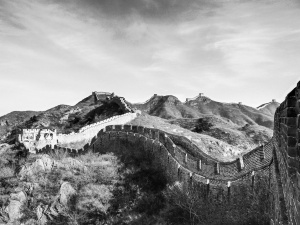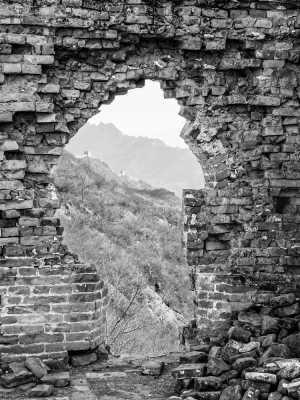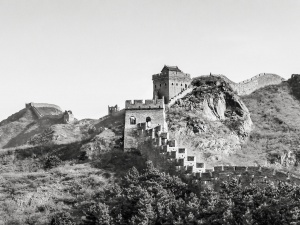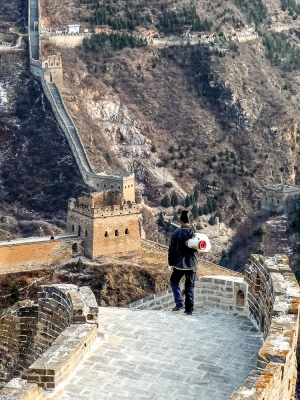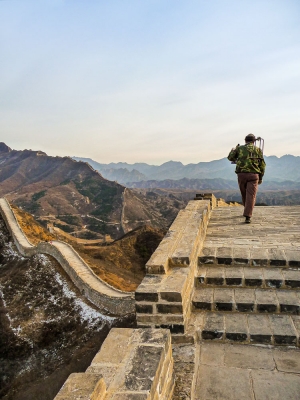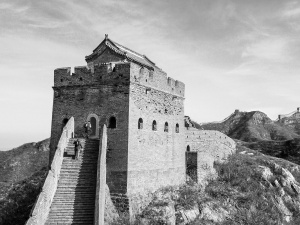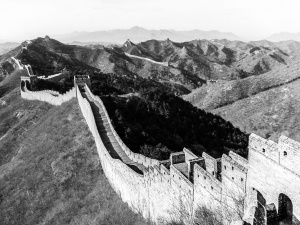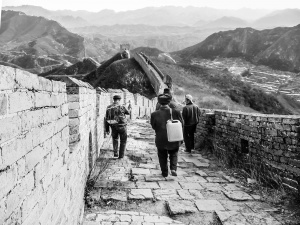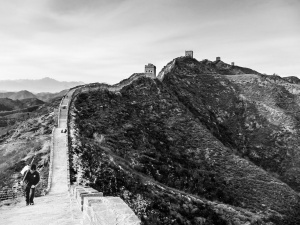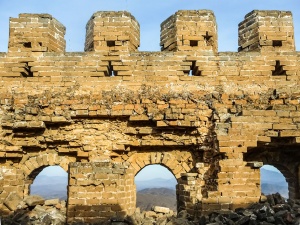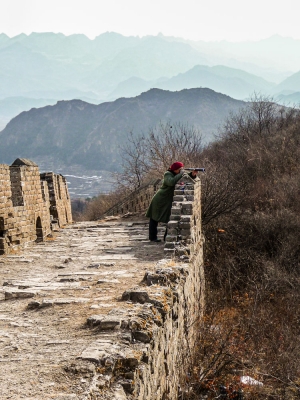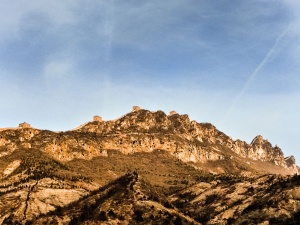The Great Wall of China
In 2009, a two-year-long mapping project completed the most comprehensive and technologically advanced survey of the Great Wall of China to date. Using GPS and infrared technology, the survey officially revealed it to be the longest wall on Earth.
It spans five provinces and a further five autonomous regions, winding its way from Bohai Bay on the Yellow Sea in the east, to the Jiayu Pass in the Gobi Desert to the west. The wall is ten metres thick in some parts, ranging in height from five to thirteen metres, with a total length of 8,851.8 km. This includes 359.7 km of trenches and 2,322.5 km of natural barriers such as mountains and rivers, only 6,259.6 km is man-made.
Today, many people live near the wall and some homes are built within it. Several villages are entirely enclosed in high-walled forts and have the characters for 'fort,' 'barracks' or 'checkpoint' in their name. Elsewhere, holes have been punched into the wall allowing sheep to pass through. In parts, stones have been 'repurposed' for construction material, and even sold to tourists a $10 per 10 kilo stone.
Traditionally, the Chinese word for the wall has been Chang Cheng, meaning 'longwall' or 'long walls'. The term 'Great Wall of China' was coined by Europeans towards the end of the 19th century. Subsequently, only in the 20th century did the Chinese start calling it something similar: Wanli Chang Cheng (literally '10,000 Li long wall').
Architects of the Great Wall
Learn More
At the height of its importance during the Ming dynasty (1368-1644), the Great Wall of China is believed to have extended some 6,437 km, a distance comparable to a journey from New York to Milan. Whilst under construction the walls were known by at least ten different names, with the Ming usually referring to them as 'bianquing' (border walls).
As a defence mechanism, the wall was used as an elevated platform, conveying troops and equipment through rugged terrain. On occasion, emperors would lead entire armies along the top of it. From a defence point of view, however, the wall ultimately proved unsuccessful. A failure not due to any intrinsic design flaws, but of internal weaknesses—corruption, cowardice and infighting—of the various imperial regimes.
At one time more than 40,000 watchtowers were strung along the Great Wall. Messages would be relayed using signals made from fire, smoke, and gunpowder. Such messages could be sent at a rate of 1000 km's per day, faster than any man on horseback. The most important messages would warn of impending attacks. One lighted beacon and one round of cannon fire conveying an incursion of a hundred men. Whilst five plumes of smoke and five rounds of cannon fire signified five thousand men. Wolf dung was used to create the straightest and longest-lasting of these plumes of smoke. Consequently, even today an outbreak of war is described as 'wolf smoke across the land.'
Photographing the Great Wall of China
In Beijing alone there is 573km of the wall. Several interesting photo spots can be discovered all within an hour or two by road from the city. Due to maintenance and restoration, it's here that the wall is at its most glorious. The most popular of these sites can be found in Badaling, Mutianyu, Juyonguan, Jinshanling, Simatai and Jiankou.
I'd recommend a trip out to Jinshanling which is around 2 hours by road from Beijing. From here you can walk along the top of the wall for 10km to Simatai. Best done on a clear day, this is a surprisingly quiet (it is the worlds most populated country after all) trek through magnificent scenery. Arranging a ride beforehand from Simatai back to Beijing would make life easier.
Completely Useless Facts about the Great Wall of China
- Despite stories that it can be seen from the moon, the Great Wall is almost invisible from only 290 km up
- It's longer than the River Nile
- Joining six together would wrap around the entire earth
- The Great Wall did not halt the Mongol invasion
Have a wemooch elsewhere...
Inspired?
Thinking about going for a really long mooch along a really long wall?
You'll need a few things to come together for it all to work out. There's some useful stuff to be clicked and pressed below.
